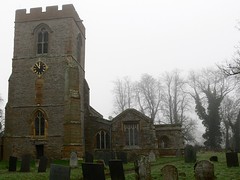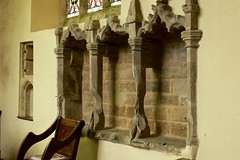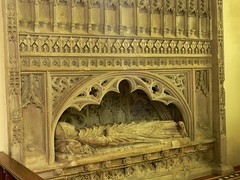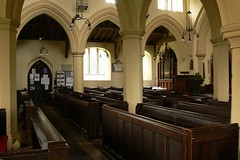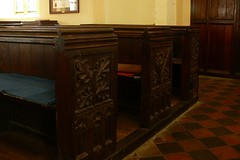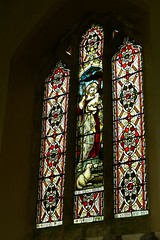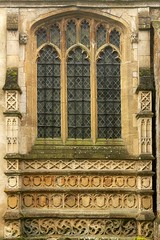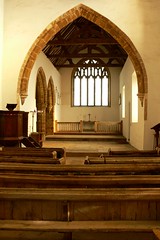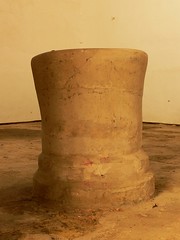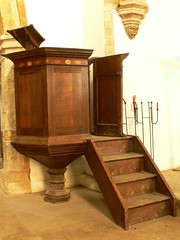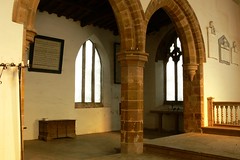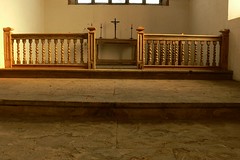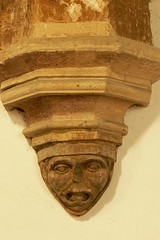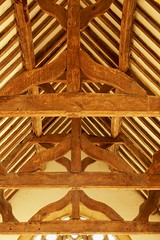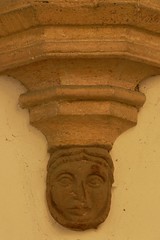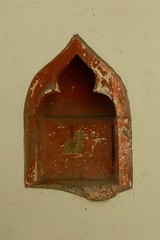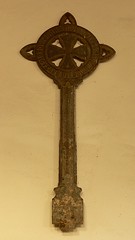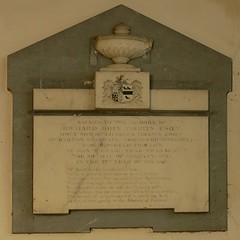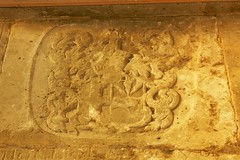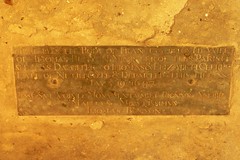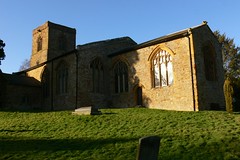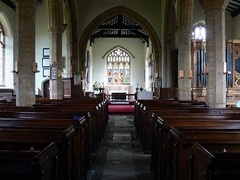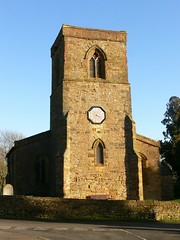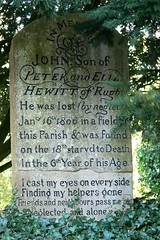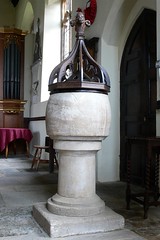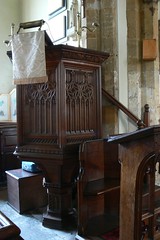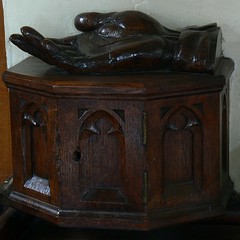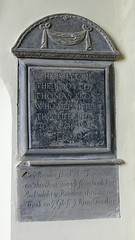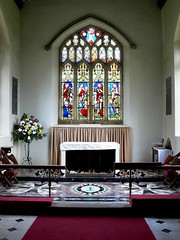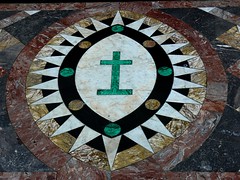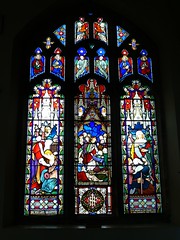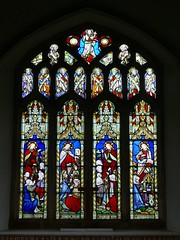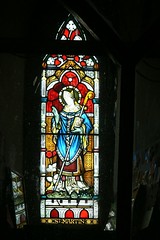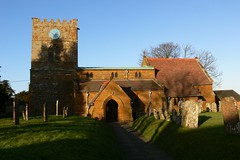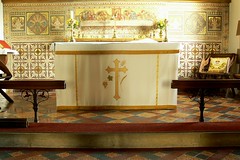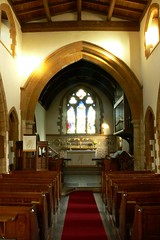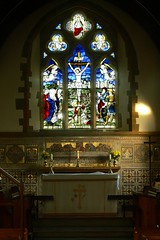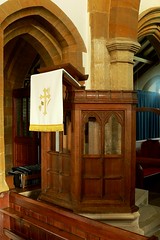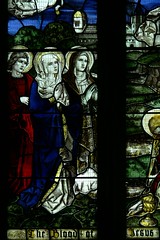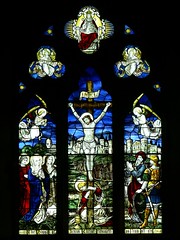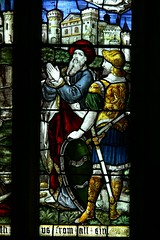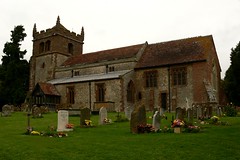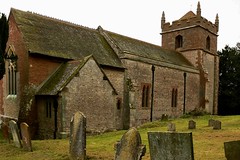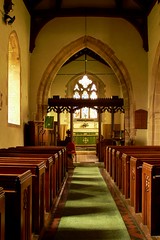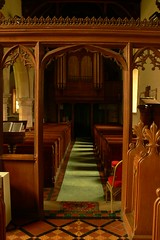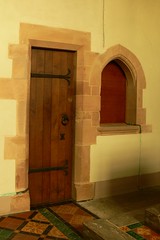Due to the small population of the parish St. Peter’s has been closed and reopened a number of times during the last 150 years. It finally ceased to hold any regular services in the 1950s.
Nowadays it is owned by the Churches Conservation Trust, and remains a consecrated building, although services are only held here once a year.
The church originally served the nearby medieval village which was abandoned some time during the 14th century. The church continued to serve the villages of Flecknoe, Sawbridge, and Nethercote. However, a smaller church was built in the late 19th century in the village of Flecknoe which is about 2-3 miles away as the crow files. The building was paid for by the railway company in 1891 as compensation for the disruption caused at Wolfhampcote. The railway itself was closed to passengers in 1952 but carried freight until 1963.
The pews in the foreground are medieval as can be seen by the low shelf which is for resting elbows, not books. The date of these pews is thought to be 14th century but there is some evidence for an earlier 11th century date. The font is Anglo-Saxon. The octagonal pulpit with inlaid panels is dated 1790.
The chancel contains a modern pointed traceried five-light window, and the altar rails are also modern. The floor is paved with a number of memorial slabs from the 18th century, and the walls contain 19th century memorials to the Tibbits family.
On either side of the chancel arch are half-round moulded corbels. The steep-pitched king-post roof in the chancel consisting of three trusses, and is probably 14th century.
A C14 ogee-headed piscina with circular basin is inset into the south wall of the north chapel, indicating that an altar was once there. The north aisle has a memorial cross to John Truslove who died aged 16.
The sanctuary contains memorial slabs and a brass memorial to Frances Benyon wife of parish minister (died 1687).
